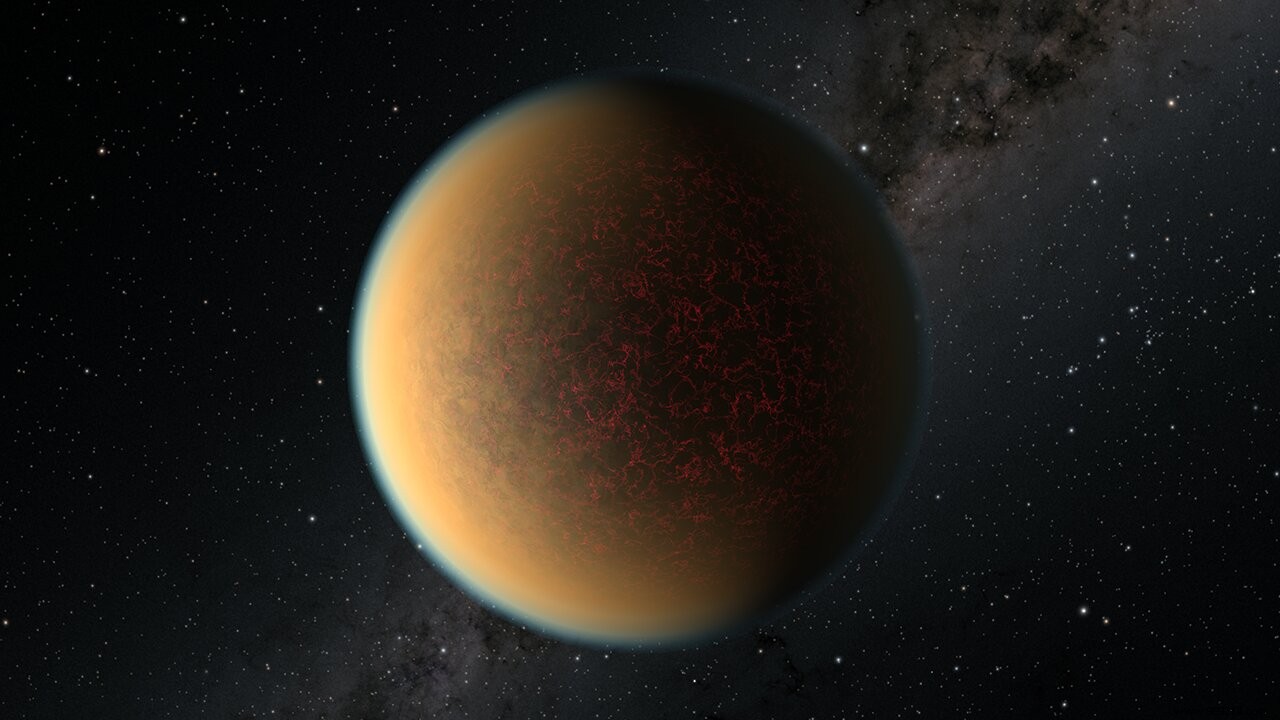Observations made by the Hubble telescope, coupled with computer simulations, suggest that GJ 1132 b, a nearby exoplanet, has lost its original atmosphere to develop a second thanks to its volcanic activity.
In some ways, GJ 1132 b, found 41 light years away, displays intriguing similarities to Earth. The two planets indeed have similar densities, sizes and ages. Both also started out with a hydrogen-dominated atmosphere and both were hot worlds before they cooled. However, in other respects, these two worlds are also very different.
On the one hand, we indeed have the Earth orbiting at a relatively comfortable distance from its Sun. And on the other, there is GJ 1132 b which is so close to its red dwarf that it goes around it in a day and a half. This proximity keeps the planet "locked" in its orbit, ultimately showing only one face to its star like the Moon with Earth.
This incredible closeness has had other consequences for the planet. In a recent study, researchers relied on direct Hubble observations and computer modeling to probe the atmosphere of GJ 1132 b. According to the study, it would today be composed of a toxic mixture of hydrogen, methane and hydrogen cyanide . However, for researchers, this is not its original atmosphere.
A few million years after its birth, GJ 1132 b had a very different face. According to the team, it was essentially a gaseous world much larger than Earth surrounded by a thick layer of hydrogen. This "sub-Neptune" would then quickly lose its primordial atmosphere due to the intense radiation of its still very hot young star. Stripped of its atmosphere, GJ 1132 b would then have been reduced to its naked, Earth-sized core.
Then, a "secondary atmosphere" would then have formed as molten lava beneath the planet's surface seeped through cracks in its crust. The gases seeping through these cracks indeed seem to be constantly replenishing this new atmosphere which would otherwise also be stripped away by the star.
This new discovery could have implications for other exoplanets. "How many terrestrial planets don't start out as such? “, asks Mark Swain of JPL. "Some may indeed be born as 'sub-Neptunes' before transforming “.

It remains to understand what keeps the mantle of GJ 1132 b hot enough to remain liquid and feed this volcanism. According to the authors, it is all a question of warming tides , a phenomenon that occurs through friction when the energy from a planet's orbit and rotation is dispersed as heat inside the planet.
Here, GJ 1132 b is in an elliptical orbit, and the tidal forces acting on it are strongest when it is closest to or farthest from its host star. However, there is at least one other planet within this system that also "pulls" gravitationally on the planet.
As a result, GJ 1132 b ends up compressed or stretched by this gravitational "pumping". This tidal heating would thus keep the mantle of the planet in liquid form long enough. The same is happening in our Solar System with the volcanic moon Io, caught in a "gravitational tug-of-war" between Jupiter and the other nearby moons.
Details of the study are published in The Astronomical Journal.